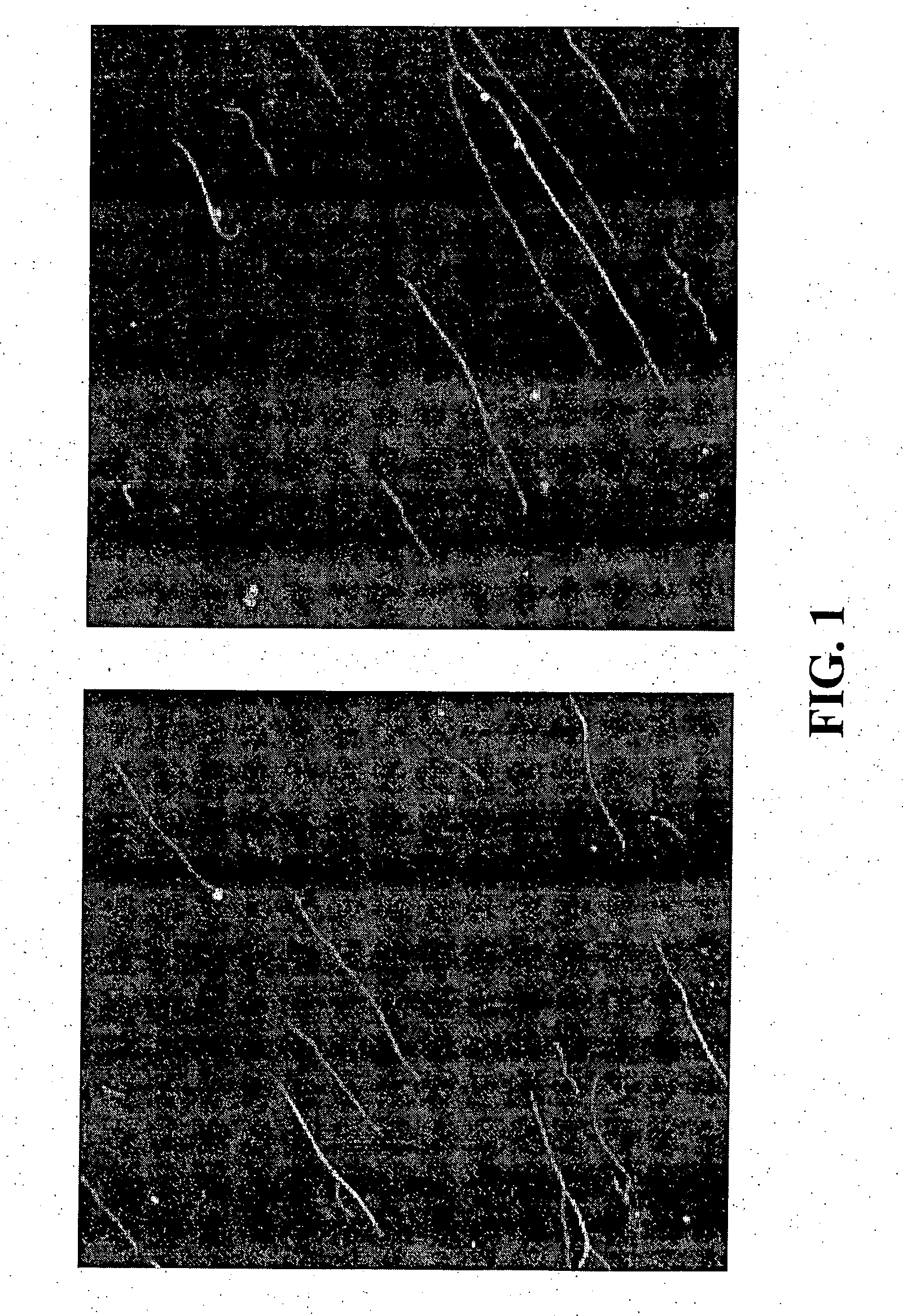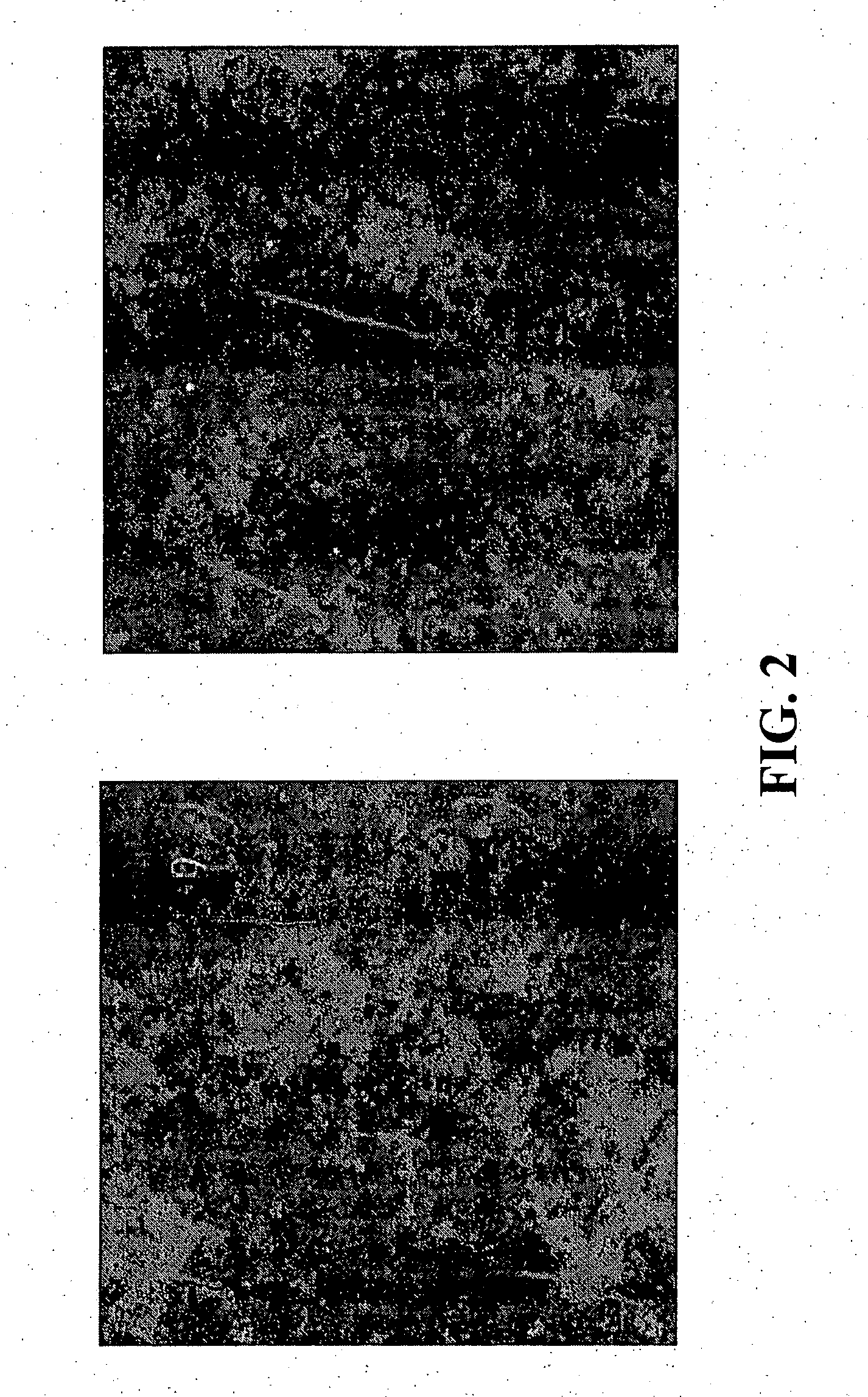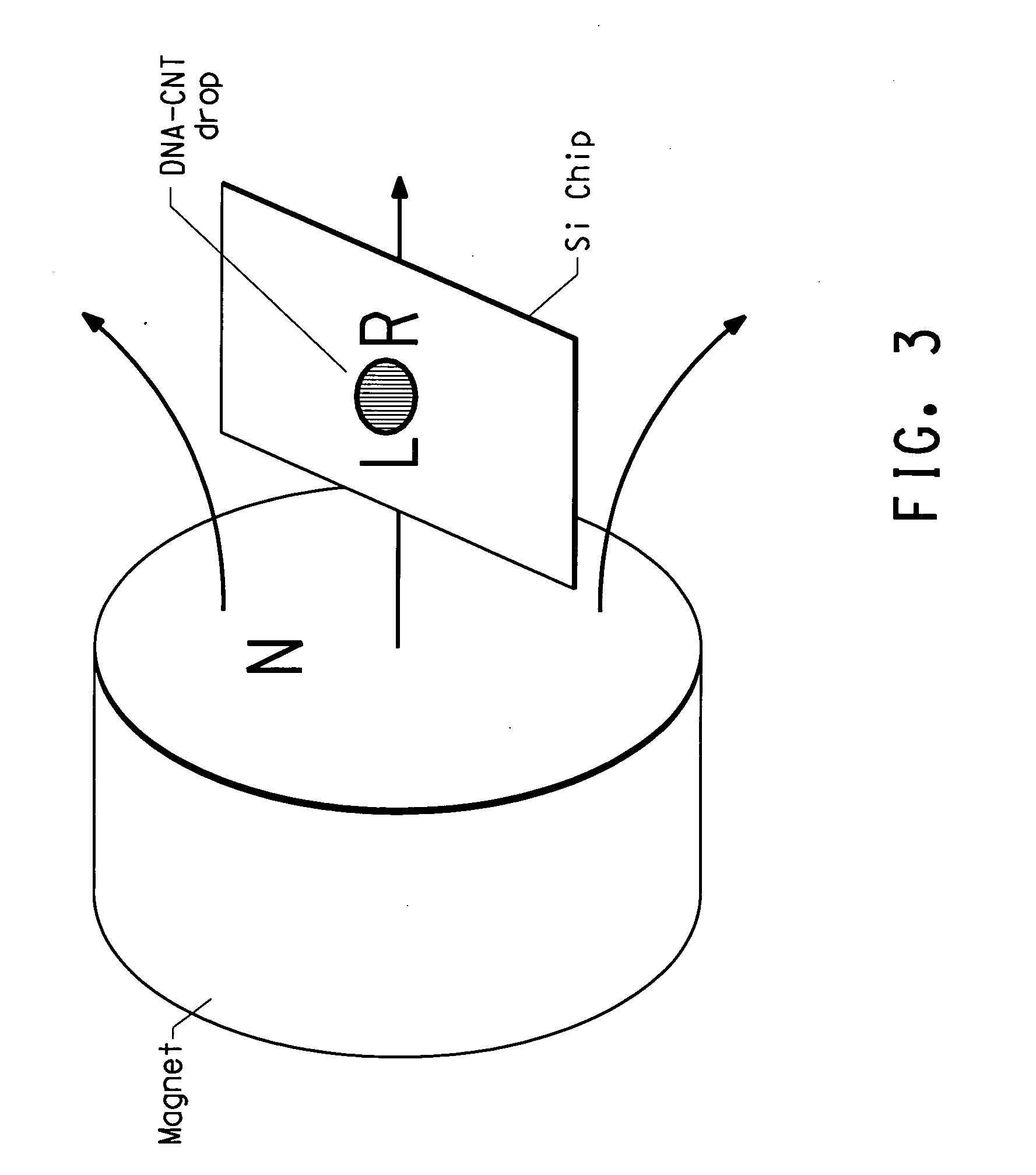Alignment of carbon nanotubes on a substrate via solution deposition
a carbon nanotube and solution deposition technology, applied in the direction of aligned nanotubes, single-walled nanotubes, chemistry apparatus and processes, etc., can solve the problems of affecting aggregation is particularly problematic, and bundling perturbs the effect of the electronic structure of the tub
- Summary
- Abstract
- Description
- Claims
- Application Information
AI Technical Summary
Problems solved by technology
Method used
Image
Examples
example 1
Purification of Carbon Nanotubes by Size-Exclusion Chromatography
[0099] This Example describes preparation of carbon nanotube materials used for experiments in the subsequent Examples. Unpurified single wall carbon nanotubes from Southwest Nanotechnologies (SWeNT, Norman, Okla.) and single-stranded DNA of either (GT)30 or random sequence were used as dispersion agents. Dispersion was done as described in U.S. 60 / 432,804 herein incorporated by reference. A size exclusion column Superdex 200 (16 / 60, prep grade) from Amersham Biosciences (Piscataway, N.J.)) was chosen for the HPLC purification. A volume of 2 mL of DNA-dispersed carbon nanotubes at a concentration of ˜100 μg / mL was injected into the column mounted on a BioCAD / SPRINT HPLC system (Applied Biosystems, Foster City, Calif.), and eluted by 120 mL of a pH 7 buffer solution containing 40 mM Tris / 0.2M NaCl, at a flow rate of 1 mL / min. Fractions were collected in 1 mL aliquots. DNA-CNT hybrids eluted from the column after about ...
example 2
Deposition of DNA-CNT Solution on to Sio2 Surface
[0101] Silicon chips (about 1 cm×2 cm) with different thickness (100 to 500 nm) of thermal oxide layer on substrates of different crystal orientation and doping were used for this experiment.
[0102] Typically the center of a 1 cm×2 cm chip, a 2.5 mm×2.5 mm square was marked to define the location for solution deposition of the CNT's. Immediately before deposition, the SiO2 surface was scrubbed with Kimwipes® EX-L tissue (Kimberly-Clark, Roswell, Ga.) wetted with methanol. A 5 μL of DNA-CNT solution (2 μg / mL in water) was mixed with an equal volume of 20 mM Tris / 0.5 mM EDTA pH7 buffer, and then the entire 10 mL mixture was deposited onto the area defined by a marked square. After a 15 min incubation at room temperature, the surface was rinsed with pure water and blown dried with N2 gas.
example 3
CNT Alignment Observation by Atomic Force Microscopy
[0103] After deposition the alignment of the CNT's was observed using atomic force microscopy (AFM)
[0104] Tapping mode AFM was used to obtain height and phase imaging data simultaneously on a Nanoscope IIIa AFM, Dimension 3000 from Digital Instruments, (Santa Barbara, Calif.). Microfabricated cantilevers or silicon probes (Nanoprobes®, Digital Instruments) with 125 micron long cantilevers were used at their fundamental resonance frequencies which typically varied from 270-350 kHz depending on the cantilever. The cantilevers had a very small tip radius of 5-10 nm. The AFM was operated in ambient conditions with a double vibration isolation system. Extender electronics were used to obtain height and phase information simultaneously. AFM data were obtained in tapping mode, in air, using previously described methods. FIG. 1 shows the alignment orientation at two different spots on the chip for CNT's deposited as described in example ...
PUM
 Login to View More
Login to View More Abstract
Description
Claims
Application Information
 Login to View More
Login to View More - R&D
- Intellectual Property
- Life Sciences
- Materials
- Tech Scout
- Unparalleled Data Quality
- Higher Quality Content
- 60% Fewer Hallucinations
Browse by: Latest US Patents, China's latest patents, Technical Efficacy Thesaurus, Application Domain, Technology Topic, Popular Technical Reports.
© 2025 PatSnap. All rights reserved.Legal|Privacy policy|Modern Slavery Act Transparency Statement|Sitemap|About US| Contact US: help@patsnap.com



